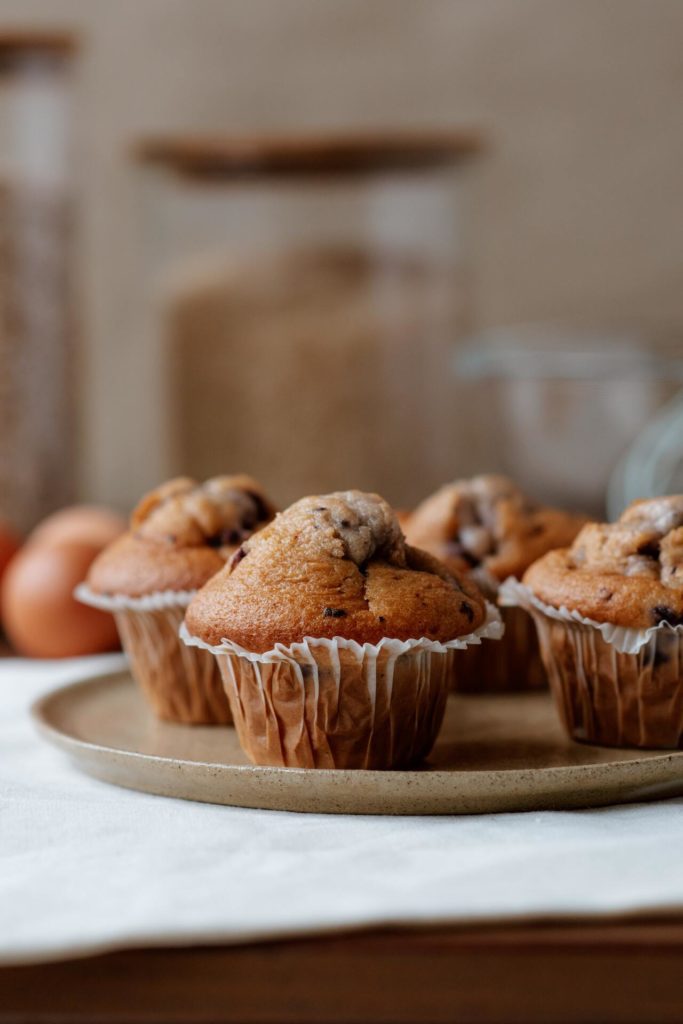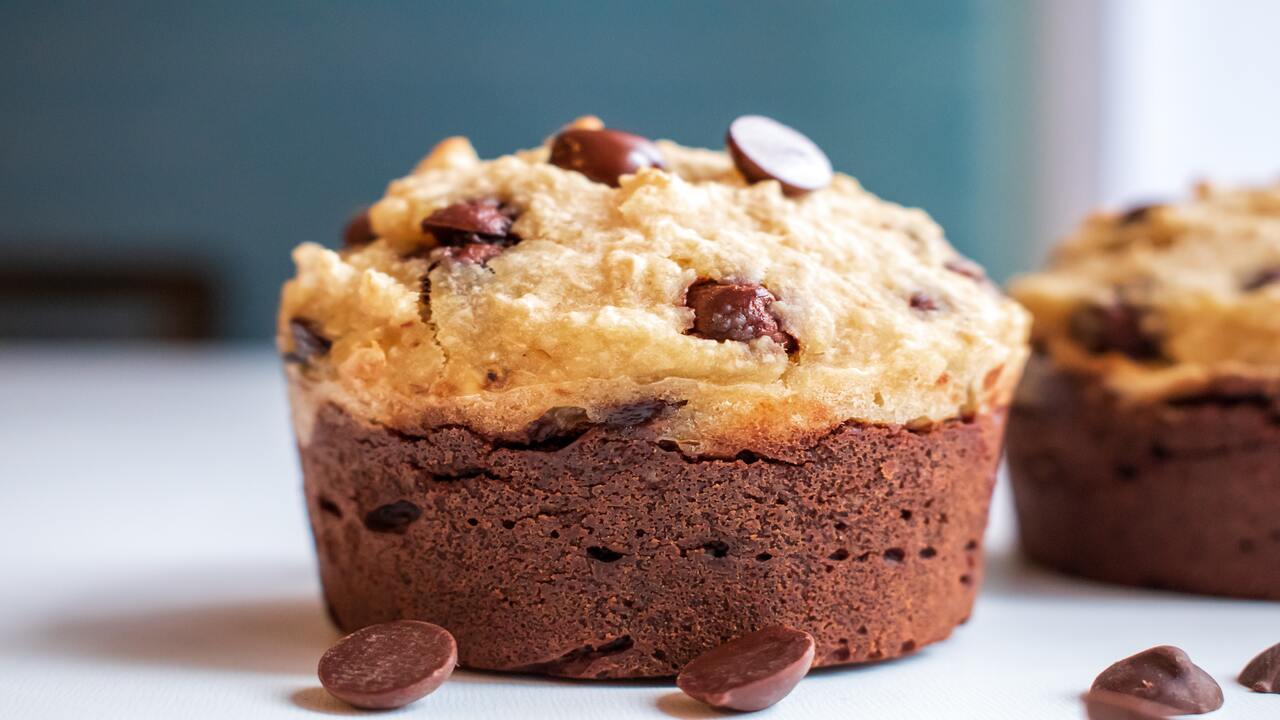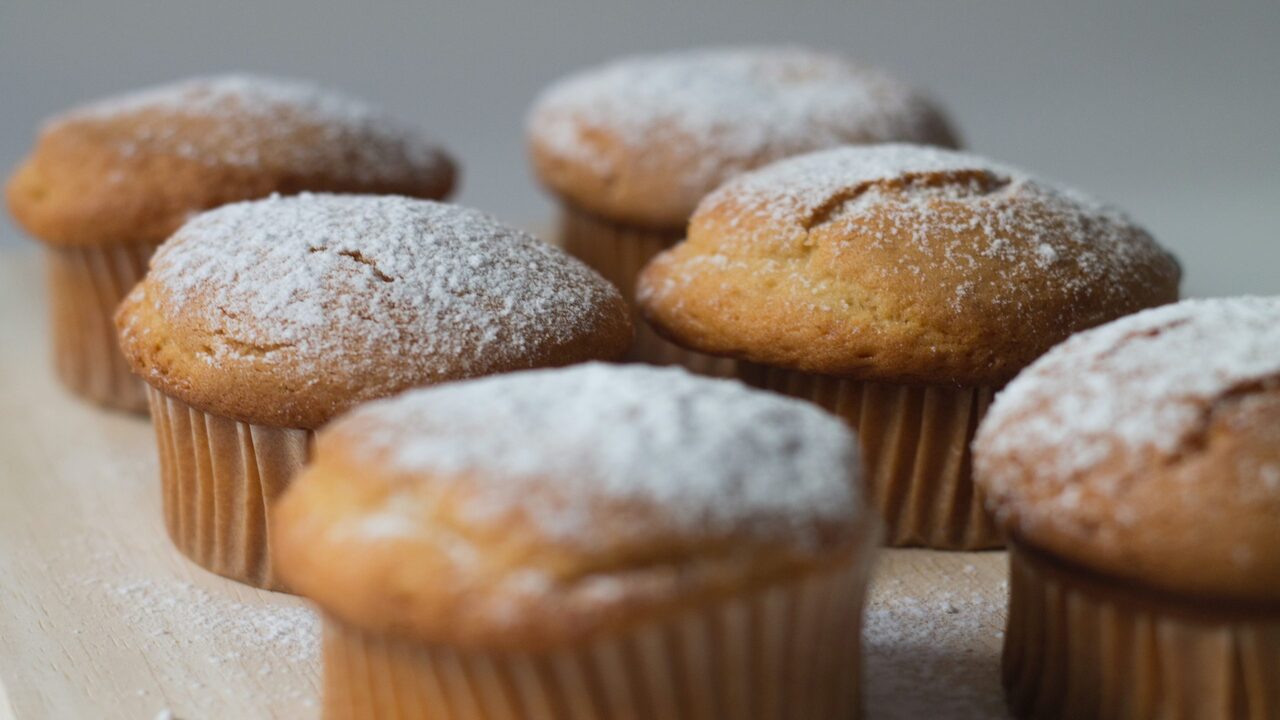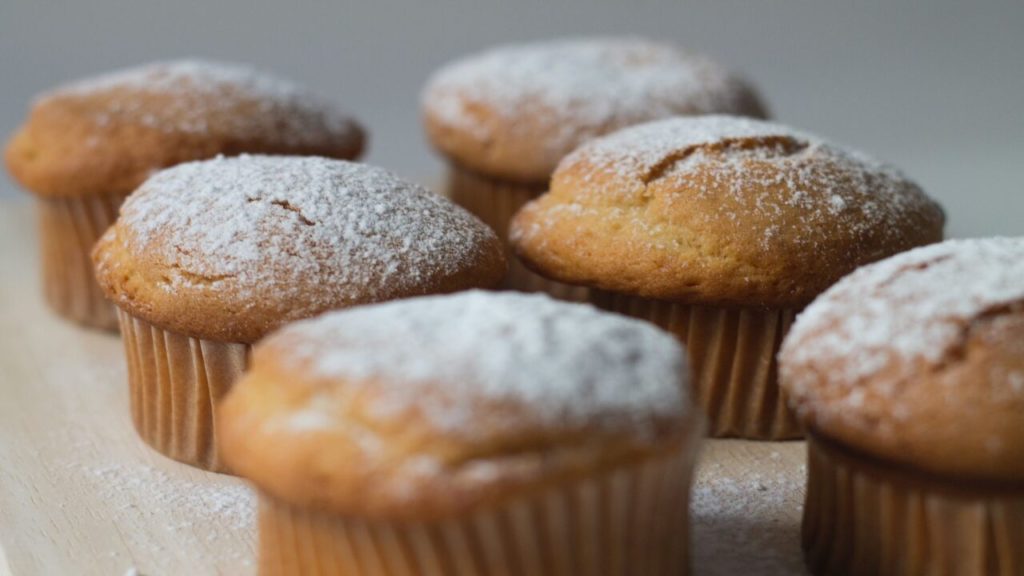The muffin, a delightful individual-sized baked good, is celebrated for its remarkable versatility and adaptability to a myriad of ingredients and flavors. This treat can be infused with a wide array of tastes, from sweet chocolate chips that offer a decadent touch to fresh, dried, or frozen fruits that introduce a refreshing burst and a hint of acidity.
Additionally, incorporating nuts lends an irresistible crunch, while vegetables can be added for healthier, more nutritious options. The true charm of the muffin lies in its limitless flavor possibilities, making it a perfect choice for various occasions. Whether enjoyed as a convenient and tasty breakfast, a festive birthday treat, a crowd-pleasing dessert, or a quick snack, muffins are always a fitting option.
They are also ideal for picnics, where they can be shared with friends and family, or given as a heartfelt gift to someone special. With such a wealth of possibilities, it’s no wonder muffins have become a cherished favorite. The kitchen becomes a canvas for creativity, allowing individuals to craft their versions by adapting classic recipes or inventing new combinations that reflect their unique tastes. Thus, muffins are not just a delicious indulgence; they also serve as a form of culinary expression that can be savored at any time of day.
Muffins are usually enjoyed in the winter – split, toasted, buttered, and served hot for tea, and sometimes with jam.
-JENIFER HARVEY Lang- restaurateur and writer
Jump To Section
- What Is a Muffin?
- The Origin
- English Vs. North American Muffins
- The Differences between Muffins and Cupcakes
- 9 Tips to Customize a Homemade Muffin
- 15 Most Popular Muffin Combinations
- 8 Easy Steps To a Master Recipe
What Is A Muffin?
Muffin with chocolate chips and powdered sugar
A muffin is a small cake, typically baked in individual portions, that can be either sweet or savory, depending on the recipe and personal taste. This delightful treat encompasses two distinct varieties, each with its own unique traits. The first type resembles a quick bread, akin to a cupcake, that is chemically leavened and baked in a special mold, resulting in a soft, fluffy texture.
The second type is a flatbread that is partially cooked and then toasted on a griddle, yielding a crispy exterior and a denser interior. Muffins are incredibly versatile, available in a wide array of flavors, both sweet and savory. Among the savory options, corn and cheese combinations stand out, delivering a robust and satisfying taste.
Sweet muffins are equally beloved, featuring flavors that range from classic blueberry and chocolate to more adventurous blends like lemon and banana. One of the muffin’s most appealing characteristics is its lightness and moisture, which create a comforting taste experience. The surface may be adorned with a thin layer of topping, which can be delicate or crunchy, adding an intriguing texture. This delightful mix of flavors and textures makes muffins an irresistible choice for breakfast, an afternoon snack, or even dessert, captivating the taste buds of people of all ages.
The Origin
Research indicates that the muffin, a beloved treat in many regions worldwide, may trace its origins to the Greek bread known as “maphula,” a cake traditionally cooked over an open fire or on a hot griddle. This historical link illustrates the evolution of food across time and cultures. The British muffin, characterized by its flat shape, emerged in the early 18th century, while the North American version gained popularity in the 19th century, mirroring the shifting culinary preferences of the era. The etymology of the word “muffin” remains a topic of scholarly debate. One prevalent theory posits that it derives from the German word “muffe,” meaning a small cake. Additionally, some suggest a connection to the Old French term “moufflet,” which refers to something soft, echoing the texture we associate with a fresh, fluffy muffin today.
Numerous researchers and culinary experts have delved into the muffin’s history and evolution. For instance, Larousse Gastronomique, a respected culinary reference, notes that during the Victorian era in Britain, muffins were immensely popular and often sold by street vendors who carried trays on their heads, ringing bells to attract customers. This practice not only underscores the muffin’s popularity but also reflects the vibrant food culture of Victorian society. John F. Mariani, in his “Encyclopedia of American Food and Drink,” states that while the origins of the word are unclear, it likely comes from the Low German “muffe,” meaning cake.
The term first appeared in print in English in 1703, with Hannah Glasse, a notable cookbook author, referencing it in her 1747 work. This highlights the significance of culinary publications in spreading recipes and popularizing dishes like the muffin. Alan Davidson, in the Oxford Companion to Food, adds that “muffin” is related to “moufflet,” an old French word for soft bread. The term first appeared in print in the early 18th century, with recipes emerging by the mid-18th century. This linguistic and culinary evolution demonstrates how foods can transcend borders and adapt to various cultural contexts.
Over the years, muffins have also undergone significant changes in size and composition. The “ancestral” muffin, approximately 3 inches in diameter, contained only 120 to 160 calories. In contrast, today’s “jumbo” muffins can range from 340 to 630 calories, reflecting not only changing dietary preferences but also a contemporary trend toward larger portions and the incorporation of diverse ingredients that increase caloric content. This transformation exemplifies the dynamic nature of gastronomy, continually adapting to new consumer demands and tastes.
English Vs. North American Muffins
English
The English style of bread is distinguished by its modest size, typically small, round, and flat. A notable feature of this bread is the use of yeast, which necessitates a preparation process that demands time and patience. This fermentation method not only enhances the bread’s texture and flavor but is also crucial for developing its unique qualities.
Traditionally, English bread is served sliced horizontally, offering a more elegant presentation and facilitating easier consumption. Once cut, it is often toasted, which intensifies its flavor and adds a delightful crunch. Buttering the toast introduces an additional layer of richness to the culinary experience. Beyond being a delicious breakfast option, English bread is versatile enough to serve as a base for sandwiches.
This adaptability makes it a favored choice for various meals, allowing for combinations with an array of ingredients, from cheeses and cold cuts to fruits and jams, making it a tasty and practical way to start the day.
North American
In North America, cooking methods significantly differ from those in other parts of the world. American and Canadian cooks often prioritize quick and easy recipes, reflecting a fast-paced lifestyle that demands efficiency in the kitchen. This preference for speed influences their choice of leavening agents, with baking powder and baking soda taking precedence over traditional yeast. As a result, cooks can whip up a variety of dishes, particularly breads and cakes, in just 45 minutes to an hour, making it feasible to enjoy homemade treats even on the busiest days.
Furthermore, this emphasis on practicality is evident in local traditions. For instance, several U.S. cities have designated an official day to honor one of the nation’s favorite treats: the muffin. Dubbed “The Official State Muffin,” this day celebrates the muffin’s versatility and popularity, showcasing its countless flavors and combinations.
This celebration not only underscores the muffin’s significance in American cuisine but also reinforces the notion that, despite a focus on speed, there remains ample opportunity for creativity and appreciation of home-cooked meals. Thus, North American culinary culture continues to evolve, striking a balance between convenience, tradition, and innovation.
New York
Apple Muffin Day in New York, a celebration of the state’s delightful flavor combination and culinary heritage, was officially established in 1987. This special day emerged from the passionate efforts of students from various schools across New York State who united to promote the significance of this tasty and nutritious snack.
Through awareness campaigns and educational initiatives, these young advocates successfully captured the attention of local and state officials, leading to the official recognition of the day. Since then, Apple Muffin Day has evolved into an annual event that encourages people to indulge in this treat, honoring not only the muffin itself but also New York’s rich agricultural legacy, renowned for its exceptional apples.
Massachusetts
In 1986, the corn muffin, a beloved staple of New England cuisine, was officially designated as the state muffin of Massachusetts. This landmark decision stemmed from a petition initiated by a group of local schoolchildren eager to celebrate and promote this cherished treat.
With its tender texture and subtly sweet flavor, the corn muffin embodies not only a rich culinary tradition but also the vital role of community involvement and youthful voices in preserving local culture.
The children’s initiative underscored the significance of the corn muffin in Massachusetts’ culinary heritage while demonstrating the power of education and civic engagement, proving that even the simplest ideas can create a meaningful impact on society.
Minnesota
The blueberry muffin has been a beloved Minnesota delicacy since 1988. Its rise to fame began charmingly when a group of third graders at South Terrace Elementary School in Carlton, MN, voted on a snack that represented their region. Aware of the wild blueberries that flourish in the forests and fields of northern Minnesota, the children selected the blueberry muffin as their top choice.
This decision not only underscored the significance of blueberries in local culture but also showcased the children’s connection to their community’s natural resources. Since then, the blueberry muffin has emerged as a symbol of the state, celebrating Minnesota’s rich agricultural heritage and the refined tastes of its younger generations.
The Differences Between Muffins And Cupcakes
Sizes
Both are the same size.
Mini – 1″ diameter
Standard – 2″ x 1 1/4″ diameter
Jumbo – 3 1/2″ diameter
Ingredients
Muffins and cupcakes are delightful treats that, at their essence, share a common foundation of basic ingredients. Typically made with flour—whether traditional wheat, whole wheat, or even oat flour for a unique flavor and texture—these baked goods offer versatility. Recipes usually call for milk, which can range from whole and skim to plant-based options like almond or soy milk, catering to various dietary preferences.
Eggs play a crucial role, providing structure and moisture, while fat—either butter or vegetable oil—ensures a rich, soft texture. Sugar sweetens the batter and contributes to the golden crust that defines these confections. Some innovative bakers opt to substitute butter with vegetable oil for a lighter, moister result, or vice versa, depending on their desired outcome. This adaptability allows for personal experimentation and adjustments to meet individual tastes or dietary needs.
Beyond the basic ingredients, what truly sets muffins and cupcakes apart is the opportunity for customization through fillings and toppings. Here, creativity knows no bounds! You can incorporate crunchy nuts for added texture or chocolate chips that melt in your mouth, delivering an irresistible flavor.
Fresh fruits like blueberries, raspberries, or apple chunks can introduce a refreshing burst of moisture, while dried fruits such as apricots or dates add sweetness and chewiness. The possibilities are virtually limitless, enabling each baker to craft their unique version of muffins and cupcakes, tailoring traditional recipes to fit their preferences and nutritional requirements. So, when you step into the kitchen, embrace the chance to experiment and uncover new combinations that will elevate your creations to new heights of deliciousness!
The Batter
Muffins: Muffin batter is crafted from a blend of dry and wet ingredients that are mixed together quickly. This brief mixing process yields a lumpy texture, which is intentional; it helps prevent over-beating, allowing the muffins to retain a denser, heartier consistency. This method also produces a more rustic and less sweet final product, making muffins suitable for various occasions—whether enjoyed at breakfast, as a snack, or even as a side dish.
Cupcakes: In contrast, cupcakes are made using the creaming method, which involves beating the batter for a longer duration. This technique is crucial for emulsifying the ingredients and incorporating air, resulting in a lighter, fluffier texture. The extended mixing allows the fat, typically butter, to blend more thoroughly with the sugar, creating a smooth, homogeneous base. Consequently, cupcakes are softer and more delicate, featuring a finer, more uniform crumb. This lightness, along with the potential for diverse and decorative toppings, makes cupcakes a favored choice for parties and celebrations, where both presentation and texture are key.
Visual
You don’t need to be a baking expert to recognize the differences between cupcakes and muffins, as their most striking distinction lies in their appearance. Cupcakes are inherently delicate and refined, featuring a top that remains proportionate to the base, creating a harmonious silhouette. In contrast, muffins are more robust and voluminous, often spilling over the edges of their pans during baking.
This results in a shape reminiscent of a mushroom, characterized by a rounded and irregular crown, which is a hallmark of this baked good. Essentially, cupcakes are miniature cakes, typically topped with a generous layer of icing that varies in flavor and decoration, making them visually enticing and hard to resist. Due to their high sugar content and elaborate presentation, cupcakes are often reserved for dessert, ideal for special occasions or celebrations. Muffins, however, offer greater versatility and can be enjoyed at any time of day.
They are frequently adorned with subtle toppings like nut crumbles or walnuts, adding flavor without overwhelming sweetness. Consequently, muffins are better suited for breakfast or snacks, providing a healthier and more substantial alternative to the rich indulgence of cupcakes. While both treats are delightful, their unique characteristics cater to different occasions and preferences.
9 Tips To Customize Homemade Muffins
- Replace all-purpose flour with oat flour, mixing with the dry ingredients first.
- Incorporate all liquid extracts, purées, or other mashed ingredients, into the wet ingredients. An essential tip for adding ingredients is to combine “like with like.”
- In a gentle folding motion, incorporate the solid mix-ins into the batter until homogenized. Do not overwork the batter.
- For a more cake-like texture, replace the vegetable oil with butter and gently increase the amount of sugar.
- Prefer to incorporate the batter by hand, avoiding over-mixing.
- Add mix-ins to the batter after combining all dry and liquid ingredients in a folding motion.
- To not sink the mix-in into the pan while baking, sprinkle flour over the ingredients, such as chocolate chips or fresh fruit.
- Do not thaw the berries, or it will color the batter.
- Use an ice cream scoop to portion the batter evenly into the pan.
15 Most Popular Muffin Combinations
The master muffin recipe works for infinite variations of flavors. Check out the most popular:

- Apple Cinnamon
- Apple Crumble
- Blueberry
- Banana Nut
- Carrot-Raisin
- Carrot with walnuts
- Chocolate Chip
- Cranberry
- Cranberry Pumpkin
- Double Chocolate
- Honey
- Lemon Poppy Seed
- Pumpkin and Cream Cheese
- Raspberry Nut
- Strawberry and Cream
8 Easy Steps To A Master Recipe
These simple yet sophisticated muffins are not only eye-catching but bursting with flavor.
Now, get to work! 😋

A Master Recipe Of Muffin
Equipment
- Mixing Bowls
- Whisk
- Wooden Spatula
- Muffin pan
- Ice Cream Scoop optional
Ingredients
- 450 g Flour
- 120 g Sugar
- 5 g Baking powder
- 5 g Baking Soda
- pinch Salt
- 1 pc Egg
- 500 ml Milk
- 120 ml Vegetable oil
- 5 ml Vanilla extract
Instructions
- Preheat the oven to 350ºF / 175ºC

- Grease the muffin pan with butter or line with paper liners.
- Combine all dried ingredients well: flour, baking powder, baking soda, salt, and sugar.
- In another bowl, mix together the milk, egg, oil and vanilla extract.
- Pour the liquid mixture into the dry ingredients bowl and beat until just combined.
- Fill about ⅔ full using an ice-cream scoop
- Bake for about 20-25 min until golden brown and a toothpick inserted in the center comes out clean.
- Allow the muffins to cool for 5 min then transfer to a plate.
Notes
Access: Eggs: Everything You Need to Know Before Cracking Them
Bottom Line
In summary, muffins are a delightful type of cake known for their simple preparation, quick baking time, and flavor versatility. This treat can be crafted with an array of ingredients, enabling individuals to tailor the recipe to their tastes.
Whether enjoyed as a sweet indulgence or a savory bite, muffins serve as a convenient and tasty option for any occasion, from a quick snack to an elegant dessert. Their tender texture and robust flavor make them a favorite among cake enthusiasts and dessert lovers alike. With such a wide range of possibilities, it’s no wonder muffins have captured the hearts of many around the globe.
Did you make this recipe?
Leave a comment below and share our content. Please help our community grow by following our social media on Spotify, Instagram, Facebook, YouTube, and TikTok. And stay up to date with the news from the world of Gastronomy.
Don’t forget to tag @gastrovinoacademy on Instagram and hashtag it #gastrovinoacademy.
Cheers 🍷




I’ve recently started a website, the info you provide on this web site has helped me greatly. Thank you for all of your time & work.
I like the helpful info you provide in your articles. I will bookmark your blog and check again here frequently. I am quite certain I will learn a lot of new stuff right here! Best of luck for the next!